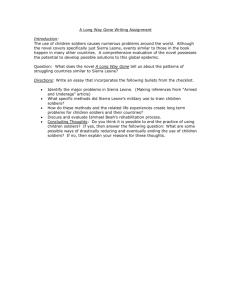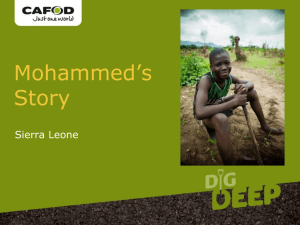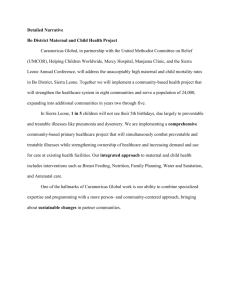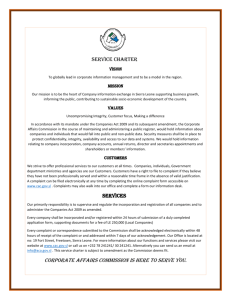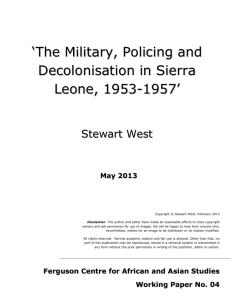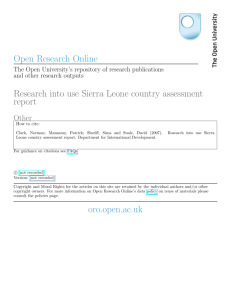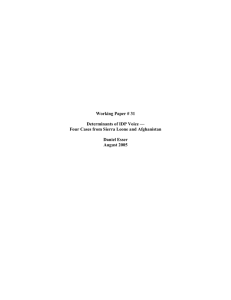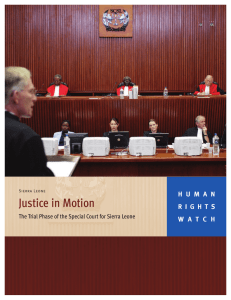Name: Blood Diamond Extra-Credit Questions Parental Signature: _
advertisement
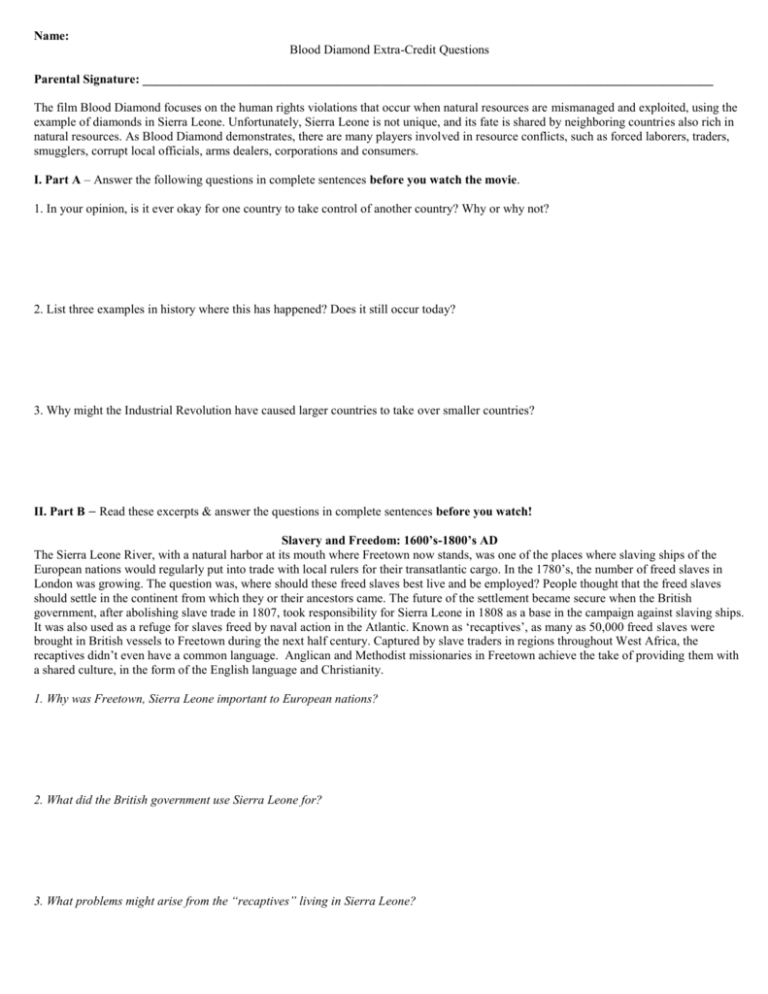
Name: Blood Diamond Extra-Credit Questions Parental Signature: ___________________________________________________________________________________________ The film Blood Diamond focuses on the human rights violations that occur when natural resources are mismanaged and exploited, using the example of diamonds in Sierra Leone. Unfortunately, Sierra Leone is not unique, and its fate is shared by neighboring countries also rich in natural resources. As Blood Diamond demonstrates, there are many players involved in resource conflicts, such as forced laborers, traders, smugglers, corrupt local officials, arms dealers, corporations and consumers. I. Part A – Answer the following questions in complete sentences before you watch the movie. 1. In your opinion, is it ever okay for one country to take control of another country? Why or why not? 2. List three examples in history where this has happened? Does it still occur today? 3. Why might the Industrial Revolution have caused larger countries to take over smaller countries? II. Part B – Read these excerpts & answer the questions in complete sentences before you watch! Slavery and Freedom: 1600’s-1800’s AD The Sierra Leone River, with a natural harbor at its mouth where Freetown now stands, was one of the places where slaving ships of the European nations would regularly put into trade with local rulers for their transatlantic cargo. In the 1780’s, the number of freed slaves in London was growing. The question was, where should these freed slaves best live and be employed? People thought that the freed slaves should settle in the continent from which they or their ancestors came. The future of the settlement became secure when the British government, after abolishing slave trade in 1807, took responsibility for Sierra Leone in 1808 as a base in the campaign against slaving ships. It was also used as a refuge for slaves freed by naval action in the Atlantic. Known as ‘recaptives’, as many as 50,000 freed slaves were brought in British vessels to Freetown during the next half century. Captured by slave traders in regions throughout West Africa, the recaptives didn’t even have a common language. Anglican and Methodist missionaries in Freetown achieve the take of providing them with a shared culture, in the form of the English language and Christianity. 1. Why was Freetown, Sierra Leone important to European nations? 2. What did the British government use Sierra Leone for? 3. What problems might arise from the “recaptives” living in Sierra Leone? British Protectorate from 1896-1961 During the 19th century, the territory of the colony around Freetown, Sierra Leone remained small even though treaties of friendship were made with neighboring chiefs along the coast. However the colonial scramble for Africa, beginning in the 1880’s, made the British government realize that a deeper locality was essential if the valuable port of Freetown was to remain viable. There was danger of encirclement by the French, busily extending their colony of Guinea to the east of Sierra Leone. During the 1890’s frontiers were agreed with French Guinea and with independent Liberia to the south. In 1896, Britain declared a protectorate over the entire region within these frontiers. The imposition of a protectorate enraged many of the inland chiefs, unconsulted on the matter, and led to an uprising in 1898. In the long term, the chiefs retained much of their local authority under the overall British administration, and some of their numbers were appointed to the legislative council in Freetown. Similarly a few descendants of the original freed slaves, known locally as Creoles, were elected to the council. After World War II this political involvement was widely seen as inadequate. Internal self-government based on universal male suffrage was introduced in 1951. In 1961, Sierra Leone became an independent state within the Commonwealth. 4. Why did the British government declare the region a “protectorate”? 5. What were the results of British involvement in Sierra Leone? III. Part C – Answer the questions in complete sentences as you watch the movie. Background: In 1999, the Sierra Leone Civil War was raging on for control of diamond fields. Main Characters: Danny Archer, Soloman Vandy, Maddy Bowen, Dia Vandy, Colonel Coetzee 1. Early in the film, we see rebels coming into a village killing the locals and burning their homes. If you knew that you had to leave your home RIGHT NOW, and you had not time to get into your car, what would you carry with you (what possession is most precious to you, what would be most beneficial)? 2. After the RUF burns Solomon’s village, they chop off the hands of the villagers. What is the significance of this action? What does it symbolize? 3. What might be going through Solomon’s mind when he sees the diamond necklace in the London jewelry store window? 4. Why are these diamonds often called “blood diamonds”? 5. Why did the refugees sometimes have to travel at night and hide during the day? 6. Why were the refugees “locked in” to their camp? 7. How would you feel if you were looking for your family and had to read these long lists of names? 8. List at least three ways that the adult rebels brainwash the children into becoming soldiers. 9. How does Dia react when his father comes to take him from the diamond mining camp? What needed to be done to help Dia learn to love his father again? 10. What punishment should be given to the men who recruit child soldiers? Be realistic and appropriate. 11. For each character in the film, diamonds represent a different idea or symbol. Captain Poison, for example, sees the pink diamond as his ticket to a better life. What do diamonds represent to each of the characters? Include: Danny Archer, Soloman Vandy, Maddy Bowen, Dia Vandy 12. At the end of the film, Solomon comes face to face with Captain Poison, the RUF commander responsible for forcing Solomon into slavery and turning his son, Dia, into a child soldier. Captain Poison says that Solomon might think he’s the devil, but it is only because he lives in hell. In what ways is Captain Poison a product of his environment and in what ways is he a product of his choices?
